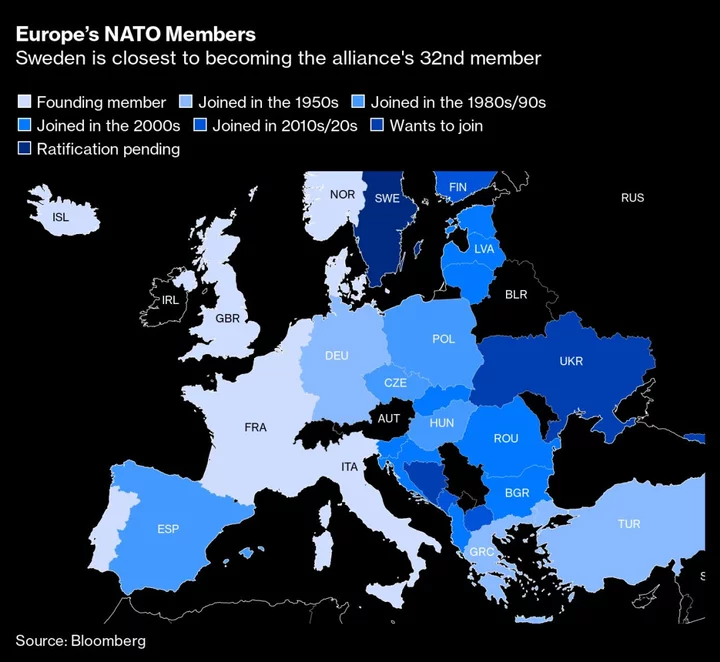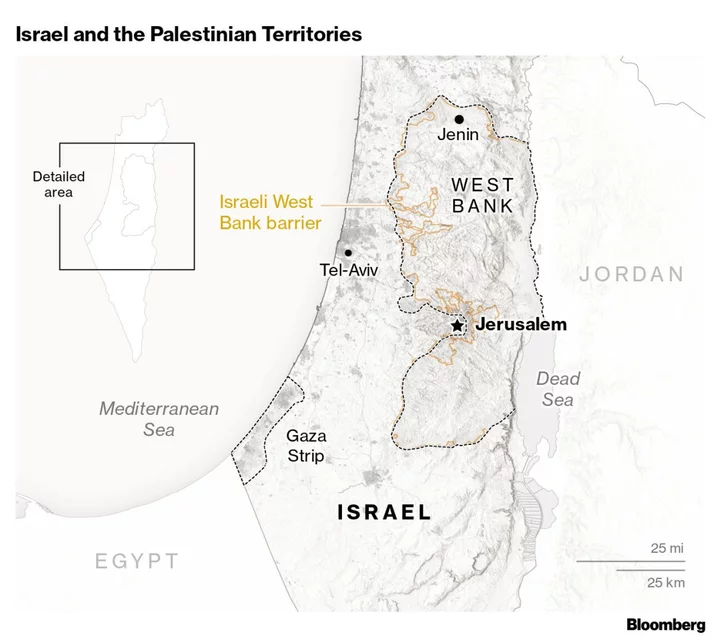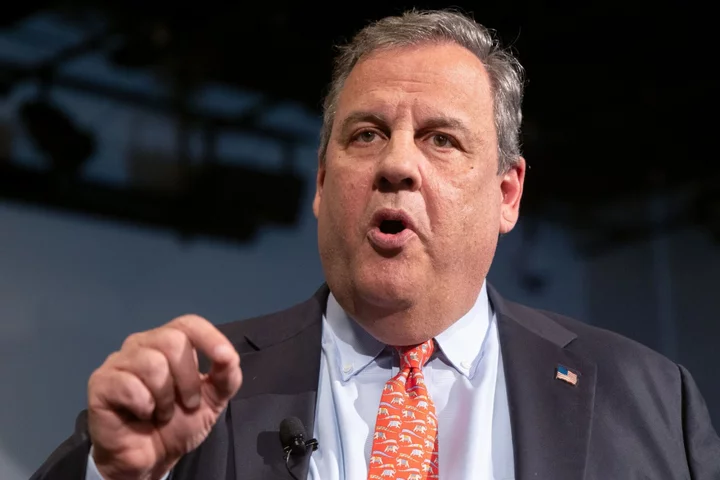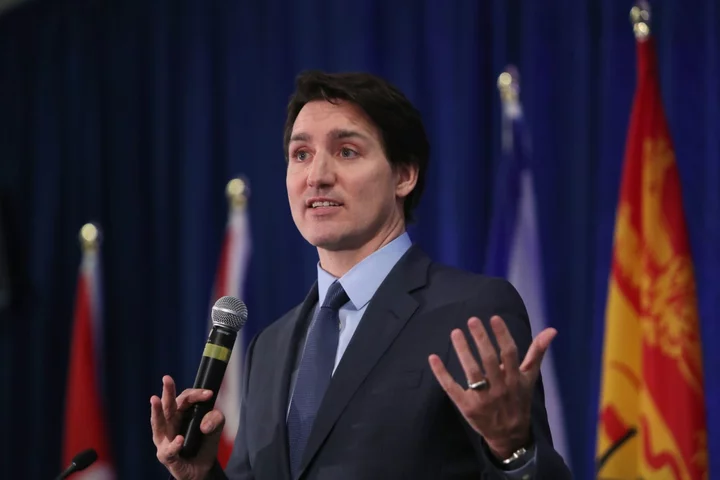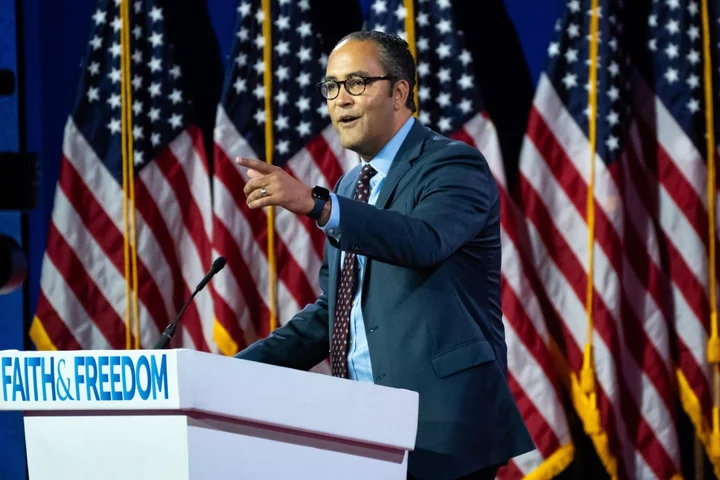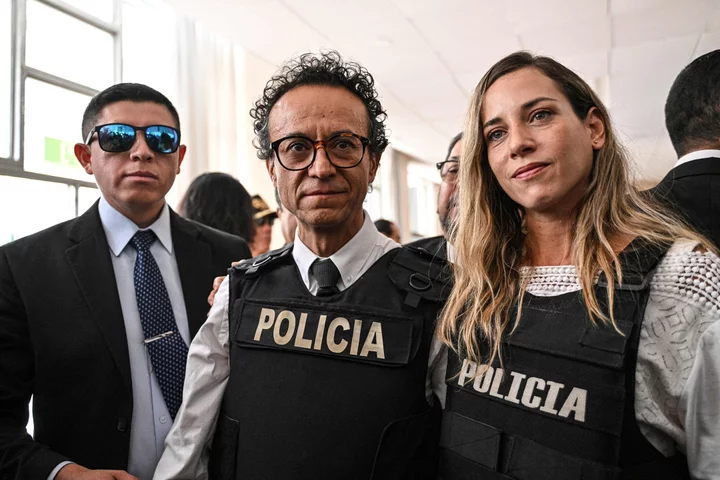NATO advanced its plans for enlargement in response to Russian aggression, firming up the prospects for Ukraine’s future membership and securing a breakthrough deal with Sweden that will complete its expansion northwards.
Meeting in the Lithuanian capital Vilnius, NATO leaders promised to invite Ukraine to join the bloc “when allies agree and conditions are met” with an accelerated accession process. They also extended new aid to President Volodymyr Zelenskiy’s government for the long term and established structures for closer coordination.
“What we have agreed is a very substantive package that helps to move Ukraine closer to NATO,” Secretary General Jens Stoltenberg said at a press conference to conclude the first day of talks. “There’s never been a stronger message from NATO at any time.”
That message applied also for the alliance’s Nordic expansion. Finnish Prime Minister Sauli Niinisto attended the summit as a full member for the first time and he was joined by Swedish Prime Minister Ulf Kristersson, who helped persuade Turkey to lift its objections to his own country’s application on the eve of the talks. Adding Finland and Sweden to the alliance vastly increases NATO’s ability to support the three Baltic members that could have been easily cut off from the rest of the alliance in a conflict.
In another show of support for Ukraine on Wednesday, the Group of Seven nations are separately expected to offer Ukraine additional security commitments on the sidelines of the summit with the aim of deterring Russia from attacking again in the future.
The developments build out a new security framework that emerged last year in response to Russian President Vladimir Putin’s invasion of Ukraine. With Finland and Sweden abandoning decades of neutrality and NATO allies deepening their coordination with Kyiv after shipping billions of dollars worth of tanks, missiles and other weaponry, Putin’s idea of a buffer zone between Russia and the West has been consigned to history.
Fifteen years ago, the alliance’s pledge that Ukraine would one day join proved insufficient to prevent the steady ramp up of Russian hostility that led to last year’s full-scale invasion. Allies have in recent months been grappling with how to move beyond that 2008 summit statement.
Some countries were worried that they would limit their room for maneuver in future negotiations with the Kremlin if the pledge is too concrete, according to an official. Others were concerned that the eventual statement wasn’t sufficiently resolute and risked repeating the mistakes of the previous generation.
Ahead of the agreement, Zelenskiy, who will meet with President Joe Biden on Wednesday, criticized the alliance for refusing to give him a clear timeline for membership in a statement posted on Twitter as he was traveling to the meeting.
“This looks like there’s neither readiness to invite Ukraine to NATO nor make it a member of the alliance,” he said, adding that such an “unprecedented and absurd” outcome would leave his country more vulnerable to Russian pressure in any potential future negotiations.
Russia’s war effectively cuts off NATO membership for Ukraine for now, since extending the bloc’s collective defense commitments to Kyiv would bring the US and its allies into direct conflict with Russia, and that’s a situation that western leaders aren’t prepared to countenance.
The Ukrainian president later told a crowd of thousands gathered in the center of the Lithuanian capital that Ukraine will make NATO stronger and the alliance will give his country security.
Mistake in 2008
NATO diplomats have been wrangling over the membership wording for weeks, with some eastern members pushing for a concrete road map, while countries like the US have wanted to focus instead on immediate assistance to fend off Russia’s attack.
The diplomats wanted to settle the negotiations in advance of the summit and avoid letting leaders draft the statement, as in Bucharest in 2008. There’s a school of thought that the agreement thrashed out by leaders including George W. Bush and France’s Nicolas Sarkozy was a strategic mistake because it brought the two former Soviet republics into alignment with the west without giving them adequate protection from Russia.
Back then, leaders agreed that Ukraine, as well as Georgia, “will become members of NATO” and stated a Membership Action Plan would be the next step but held back on formally launching any process. Putin, who also attended the summit, warned that NATO expansion would force Russia to respond with measures to protect its security and in 2022 tried to justify his invasion of Ukraine by linking it to the alliance’s enlargement.
Tuesday’s agreement means that Ukraine will no longer need to go through a MAP before joining the alliance. Instead, Kyiv will face regular reviews on its progress on tackling corruption and other reforms.
NATO allies individually are due to commit to equipping Ukraine with modern weapons in the long-term, as well as providing training, sharing intelligence and supporting the development of the country’s defense industry. Each nation will provide different commitments, and other countries can join the arrangements, with specifics to be negotiated in the future.
The language on NATO membership forms part of a broader package, aimed at deepening ties with Kyiv and underlining the alliance’s long-term support. The allies upgraded the formal status of the bloc’s ties with Kyiv via a newly established NATO-Ukraine Council, which will allow the country to directly take part in broader discussions about the alliance’s security and hold consultations with allies about its security concerns. NATO also agreed to establish a multi-year program of non-lethal assistance and funding to help modernize the country’s military, helping make it more interoperable with allied systems.
--With assistance from Arne Delfs, Andra Timu, Jennifer Jacobs, Daniel Flatley, Kevin Whitelaw, Justin Sink and Selcan Hacaoglu.
Author: Natalia Drozdiak, Daryna Krasnolutska and Milda Seputyte

